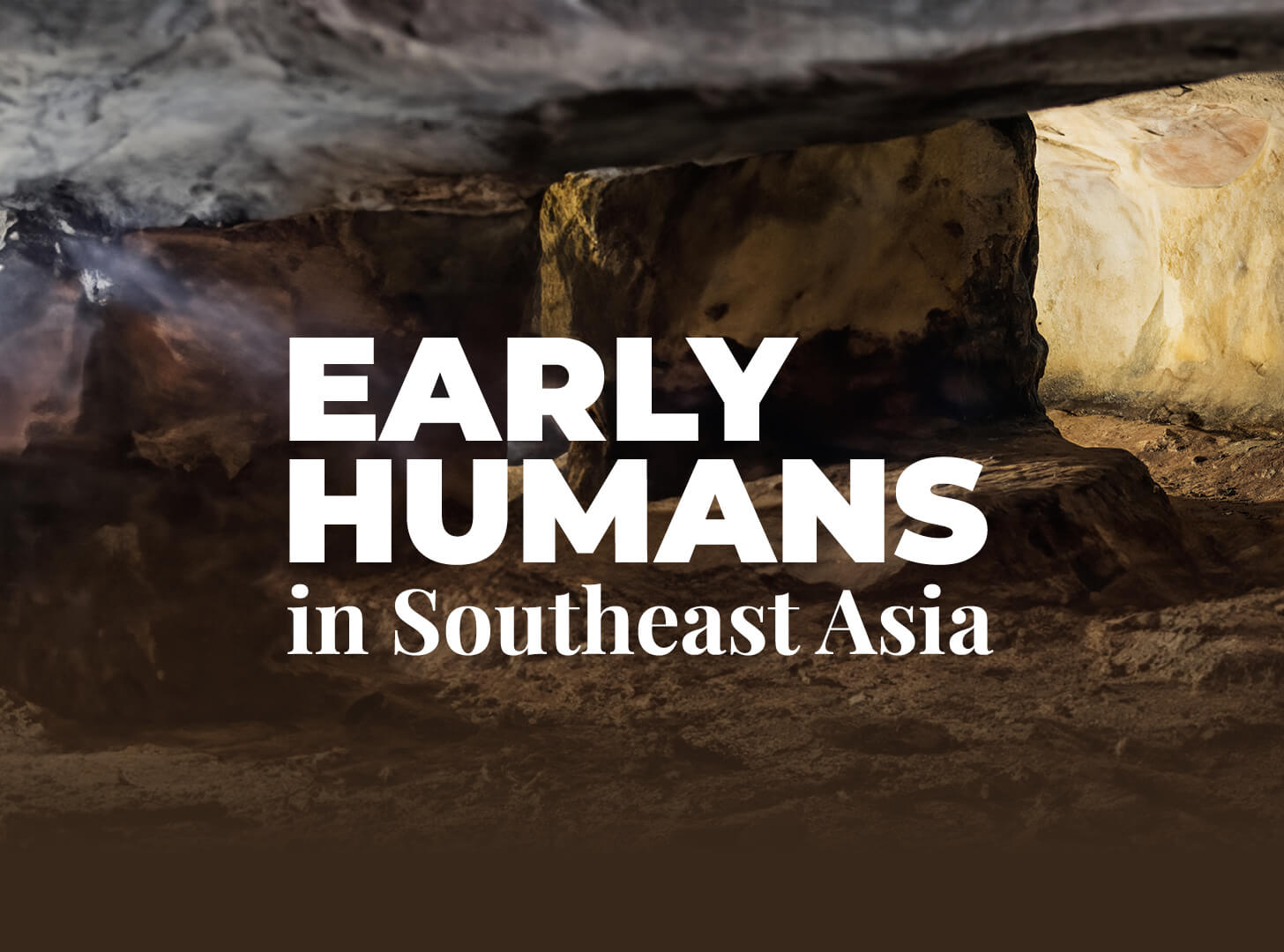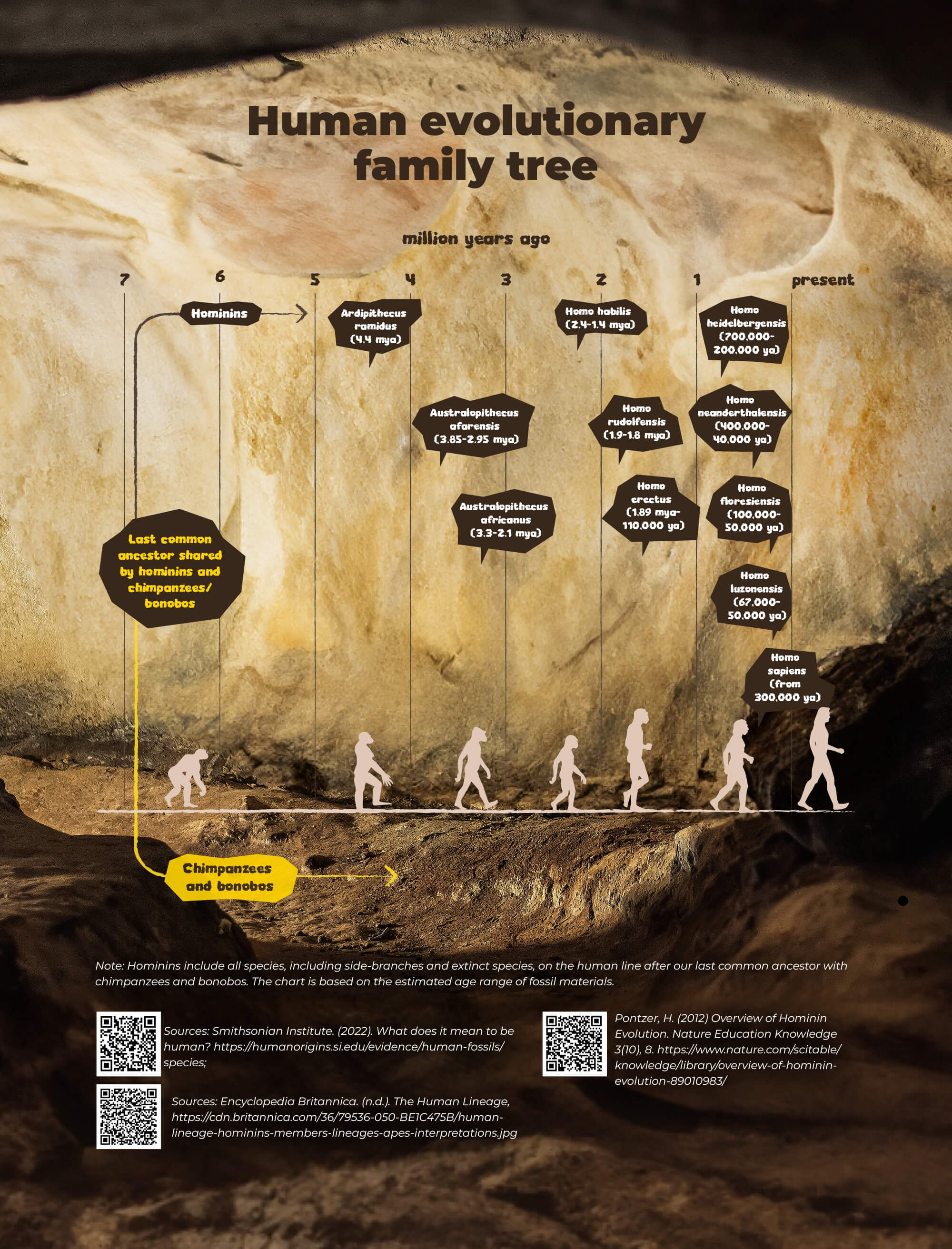




Fossil discoveries in Indonesia, the Philippines, and just recently, the Lao PDR are altering our understanding of human evolutionary history. They suggest that diverse groups of ancient or primitive hominins reached and inhabited Southeast Asia much earlier than thought and coexisted with modern humans before they went extinct. It raises questions about the origins, migrations, and interactions between these groups.
Homo floresiensis
Between 2003 and 2004, archaeologists uncovered the bones of individuals belonging to a new hominin species at Liang Bua cave on the island of Flores, Indonesia. The species, named homo floresiensis, was discovered by a joint team of Indonesian and Australian researchers led by M.J. Morwood of the University of New England.
The archaeologists found the homo floresiensis anatomically different from other known species. Based on the fossil remains, they had short stature, standing at less than 4 feet tall; a small braincase, about a third of the size of modern humans; thick and protruding eyebrow ridges; no chin; tiny collarbone; primitive wrist structure; and large and flat feet.
They share these features with austrolopithecines, a more archaic branch of hominins that appeared in Africa some three million years ago. But, homo floresiensis also bore more modern features, including a flatter face, reduced tooth size, and human-like pelvis, femur, and toes that support bipedalism.
Varying stone tools and animal bones, including those of elephant-like stegodon, were also found alongside the fossil remains. The presence of “charred bone and clusters of reddened and fire-cracked rocks” indicate their possible use of fire. M.J. Morwood et al. concluded in their 2005 Nature article “that the area was a focus for a range of hominin activities and that homo floresiensis was capable of complex behaviour and cognition.”
Homo floresiensis inhabited Flores from at least 100,000 years ago to about 50,000 years ago. This means their existence overlapped with modern humans who arrived in Southeast Asia around 60,000 years ago. There is, however, no evidence to suggest that the two species ever crossed paths.

When and how homo floresiensis arrived in Flores are still highly contested. The team who discovered the species proposed that it descended from an early population of homo erectus, the first hominins that migrated out of Africa. The team further hypothesised that adaptation to scarce resources and the presence of very few predators or competing species led to the species’ endemic dwarfism.
Another group of researchers proposed that the fossils were that of homo sapiens who suffered pathological conditions, such as microcephaly, that accounted for their unique anatomy. This theory has since been discarded by the scientific community.
Recent fossil finds from another area in Flores and a new analysis of a range of hominin species yielded another hypothesis. “The results suggest homo floresiensis is a long-surviving relict of an early (>1.75 million years ago) hominin lineage and a hitherto unknown migration out of Africa, and not a recent derivative of either homo erectus or homo sapiens,” says Argue et al. in a Journal of Human Evolution article.
Although two decades had passed since the discovery of homo floresiensis, much more is still unknown about the species, including their behaviour, interaction, and extinction. How did they communicate and cooperate with each other? What factors led to their demise? These are some of the questions that continue to fascinate the scientific community and the public.
Homo luzonensis
In 2019, a multinational team of archaeologists and anthropologists led by Armand Mijares of the University of the Philippines and Florent Detroit of the Muséum National d’Histoire Naturelle announced the discovery of another species in the hominin lineage. A foot bone unearthed in 2007 and additional bone fragments of at least three individuals uncovered in 2019 in Callao Cave, Northern Luzon indicate hominin presence in the Philippines dating back to 50,000 to 67,000 years ago.
“These specimens display a combination of primitive and derived morphological features that is different from the combination of features found in other species in the genus homo (including homo floresiensis and homo sapiens) and warrants their attribution to a new species, which we name homo luzonensis,” the researchers note in their 2019 Nature article.
In particular, the species had small teeth that resemble those of more modern hominin branches, but their hands and feet look more like the australopithecines. The size of the remains also suggests that homo luzonensis may have been short, perhaps more similar to homo floresiensis in height. Researchers, however, cannot infer how homo luzonensis moved around or used their hands because the fossils are incomplete.
Like in the case of the homo floresiensis, it remains unclear how homo luzonensis evolved and how it was linked to other hominins that lived at the same time. The researchers say that more evidence and new discoveries are needed to shed light on how this species fits in the evolutionary tree.
New fossil finds in the Lao PDR
Archaeologists revealed this June that they found skull and shin bone fragments inside the Tam Pà Ling cave in northern part of the Lao PDR. The skull fragment was about 70,000 years old, while the shin bone was about 77,000 years old or possibly older. A skull piece unearthed from the same site a decade ago was estimated to be 46,000 years old.
Archaeologists surmise that these bone fragments belong to homo sapiens, although the younger fossil, with a blend of archaic and modern features, might have come from an older wave. This raises the possibility that these groups of homo sapiens may have contributed to the gene pool of modern-day humans. The location of the fossil materials—an upland area in mainland Southeast Asia—also casts doubt on the assumption that modern humans’ earliest travels were along coastlines rather than upland forested areas.
Archaeologists are continuing their exploration and hope to uncover more complete fossil remains that can unravel the origins and journeys of these modern human groups.
Implications of the Southeast Asian discoveries
The discovery of homo floresiensis and homo luzonensis suggests that species much older than homo erectus might have left Africa and reached Asia, challenging the prevailing notion that only more modern human groups could cross open waters and travel long distances. The presence of archaic and modern species in archipelagic and mainland Southeast Asia at overlapping periods also invites further inquiry into their possible interactions and adaptation to the region’s diverse environments. There is still much to learn about the hominin family tree and it is clear that Southeast Asia holds many clues for understanding human origins and variation.
The references may be downloaded from the following link:
https://shorturl.at/bhxGR








